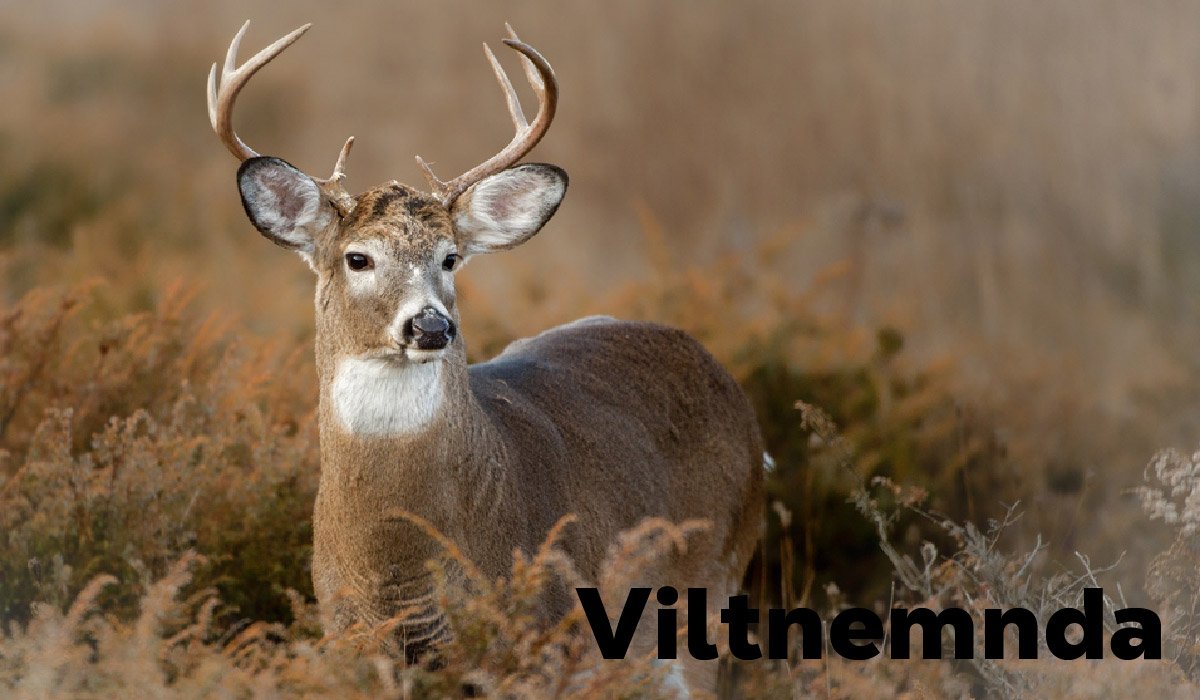Blog
Viltnemnda Guide: Powerful Wildlife Management Benefits Explained

Introduction
When people think about wildlife in Norway, they often picture majestic moose roaming the forests, deer crossing quiet country roads, or hunters in traditional gear during autumn. But behind this picturesque image lies a system of dedicated local management that ensures people and wild animals can share space safely and responsibly. One of the most important yet lesser-known elements of Norway’s approach to wildlife governance is the viltnemnda.
These local wildlife committees operate at the municipal level and are tasked with vital responsibilities like managing hunting permits, responding to wildlife-related emergencies, and resolving conflicts between humans and nature. While not everyone may be familiar with the term, anyone living, driving, or farming in Norway is directly affected by the decisions these committees make.
From handling a moose collision on a rural road to advising on land development that may disrupt migration routes, Viltnemnda is the quiet but essential force ensuring balance between conservation, safety, and traditional land use.
The Meaning and Legal Foundation of Viltnemnda
The word “viltnemnda” is made up of two Norwegian components: “vilt,” meaning wildlife, and “nemnda,” meaning committee or board. Put together, Viltnemnda refers to a local governing body responsible for wildlife management. This term is distinct from “viltforvaltning,” which encompasses the broader field of wildlife governance.
The viltnemnda is more focused and local—handling on-the-ground decisions and responses at the municipality level, as opposed to setting national policy. Legally, viltnemnda is backed by two major pieces of Norwegian legislation: the Jakt- og fangstloven (the Hunting and Wildlife Act of 1981) and the Naturmangfoldloven (the Nature Diversity Act of 2009).
These laws establish the framework for wildlife conservation, sustainable hunting, and biodiversity protection. According to these statutes, municipalities are required to have systems in place to manage wildlife-related tasks, and viltnemnda is the body through which they fulfill these obligations.
The legal system ensures that decisions made by these committees are not just advisory—they carry actual authority under Norwegian law. Lovdata, the official legal information service of Norway, contains full versions of these laws, reinforcing transparency and accountability in how viltnemnda operates.
Structure and Membership of Viltnemnda
Each viltnemnda is appointed by the municipal council and typically consists of 3 to 7 members, often including alternates. These members are chosen based on their experience, community representation, and sometimes their background in relevant fields like hunting, farming, conservation, or environmental science.
The goal is to form a diverse, balanced committee that reflects local stakeholders. For example, a municipality with a large farming population might include a farmer or agricultural representative, while areas with significant protected landscapes might appoint someone with a conservationist background.
This balance allows for more holistic and fair decision-making. The viltnemnda reports directly to either the municipal council or the environmental department of the municipality. Some committees act in a purely advisory capacity, while others are given more direct administrative power depending on how the local government structures its nature governance.
Regardless of structure, viltnemnda holds legal authority in many matters, especially when it comes to issuing hunting permits, advising on road planning, and approving emergency interventions involving wildlife.
Key Responsibilities of Viltnemnda
The viltnemnda handles a wide range of critical tasks that directly affect both wildlife and the human populations living near them. One of the most urgent roles they play is in emergency response to wildlife accidents, especially road collisions involving large animals like deer and moose.
In such cases, the police usually take the initial report and then contact the municipality, which activates the viltnemnda or its partnered ettersøkskorps—a trained search and recovery unit equipped to track injured animals and provide humane dispatch if necessary. Another major responsibility of the viltnemnda is setting and reviewing hunting quotas and issuing permits. Hunting in Norway is regulated by national laws, but local implementation falls under the committee’s purview.
They review proposals called bestandsplaner—multi-year plans submitted by landowners and hunting groups outlining the intended number of animals to be harvested. Viltnemnda evaluates these plans based on biological data, collision statistics, and other ecosystem indicators to ensure sustainable wildlife populations. For farmers and landowners, the committee handles complaints and damage control cases.
If wildlife causes significant damage to crops, fencing, or livestock, viltnemnda investigates the claim and may recommend skadefelling, a controlled culling action to manage or remove the problem animals. In addition to direct interventions, the committee is responsible for monitoring and data collection. They coordinate wildlife counts, track animal movements using tools like camera traps or drones, and ensure that hunting returns are properly recorded.
This data feeds into national statistics and informs future decisions. Finally, the viltnemnda also engages in public education and awareness, helping the public understand wildlife behavior, safety measures (like reducing speed in high-risk areas), and legal responsibilities.
Real-Life Examples from Norwegian Municipalities
The impact and variation of viltnemnda can be best understood by looking at real-world examples across Norway. In Lillesand, the committee handles local issues labeled as “skade på vilt” or damage caused to or by wildlife. This includes property damage reports, and the committee is legally recognized as the body responsible for managing these cases. In Målselv, the viltnemnda consists of five full members and several alternates, publicly listed with contact details, which reflects a high level of transparency and encourages citizen interaction.
Interestingly, in the city of Skien, the municipal council chose to dissolve the formal viltnemnda and instead rely on an ettersøkskorps to handle practical tasks like responding to animal collisions.
This shows how flexible the system can be depending on local capacity and priorities. In Randaberg, the viltnemnda has faced criticism for being too hunter-dominated, with concerns raised about impartiality and the need for broader stakeholder inclusion. These variations highlight both the strength and challenges of localized wildlife governance in a country where conditions can differ drastically from one municipality to another.
Technology and Data in Wildlife Management
Modern viltnemnda operations are increasingly informed by technology and real-time data. Tools like GPS tracking collars, drones, and camera traps allow committees to monitor wildlife movements without the need for invasive methods. These tools are particularly helpful in large or forested areas where visual surveys are difficult. For example, a drone can help track the movement of moose herds or locate an injured animal after a reported road accident.
Beyond field equipment, data analytics play a major role in decision-making. Harvest statistics (such as age and sex of animals shot), seasonal roadkill patterns, and landowner reports feed into databases that viltnemnda uses to assess whether animal populations are growing too large or dropping below sustainable levels.
This evidence-based approach aligns with the Nature Diversity Act’s principle that all actions affecting biodiversity must be grounded in current knowledge and precautionary thinking. Citizen-reported incidents also form a valuable data stream—apps and mobile reporting portals could soon make this process faster and more accurate, especially in remote municipalities.
Viltnemnda vs. U.S. Wildlife Management: A Comparison
| Topic | Norway: Viltnemnda | USA: County/State Wildlife Systems |
|---|---|---|
| Governance | Local boards under national wildlife laws | State-run agencies with county-level coordination |
| Emergency Response | Viltnemnda + police + trained dog teams | State DNR + highway patrol + local law enforcement |
| Quotas and Planning | Based on bestandsplan + data review | Mostly state-set; public comment varies |
| Citizen Responsibilities | Legally required to report roadkill | Reporting often voluntary or varies by state |
The key difference is that Norway emphasizes local, law-empowered boards like vilt nemnda, while in the U.S., wildlife decisions are more centralized at the state level, with variable local involvement. Norway’s model allows for faster, more context-specific decisions that reflect local conditions, while still adhering to national conservation goals.
Challenges and Criticism Faced by Viltnemnda
Despite its effectiveness, viltnemnda is not without challenges. One recurring issue is balancing conflicting interests. Hunters, conservationists, landowners, and animal rights advocates often have diverging views. While some municipalities face pressure to authorize more culling to protect farms, others emphasize habitat conservation and stricter hunting limits. Finding a solution that satisfies all sides is difficult, especially in politically charged communities.
Another problem is the limited funding and personnel available in smaller municipalities. Some viltnemndas operate with volunteers or part-time members, which limits their capacity to respond quickly or handle complex situations. Climate change adds another layer of uncertainty, altering migration patterns, hibernation cycles, and even species distribution. New challenges, like warmer winters causing increased moose activity on roads, demand new strategies.
Finally, some critics point out legal ambiguities and overlapping jurisdictions, especially when responsibilities are shared among police, municipal authorities, and national agencies. Clarifying these roles and ensuring better coordination remains a priority.
How Citizens Can Engage with Viltnemnda
Ordinary people have many opportunities to support and engage with their local vilt nemnda. The most common interaction is during wildlife collisions. If you hit or see an injured animal, you must call the police (02800), who will notify the viltnemnda or the relevant wildlife team.
Mark the location and stay available for follow-up if needed. If you’re a farmer or landowner experiencing damage from wildlife, you can submit a claim to the municipality, including evidence like photographs, time, and location. In many areas, the viltnemnda holds public meetings or invites input when developing bestandsplaner or new wildlife policies. Attending these meetings or providing written input helps shape local decisions.
Some municipalities even allow residents to volunteer or be considered for board membership, especially if you have experience in wildlife, agriculture, or public service. Finally, spreading awareness and education—for example, reminding neighbors to report collisions or slow down in high-risk areas—helps strengthen the effectiveness of the vilt nemnda.
The Future of Viltnemnda – What Comes Next?
Looking ahead, viltnemnda is poised to become even more important. The growing complexity of wildlife-human interactions, combined with climate shifts and urban sprawl, will require these committees to be smarter, faster, and more adaptive. Technological innovations like AI-powered alert systems, mobile citizen-reporting tools, and real-time animal tracking will become essential.
Climate-resilient policies will need to be developed, including dynamic hunting quotas and migration corridors. There’s also a growing call for more diverse representation, ensuring that women, younger generations, and indigenous voices are included in local boards. Additionally, more regional cooperation is expected, especially in areas where wildlife moves across municipal boundaries. Sharing data and coordinating responses could make the system more efficient and ecologically sound.
Summary
At its core, viltnemnda is more than just a committee—it’s the local embodiment of Norway’s commitment to ethical, science-based, and community-responsive wildlife management. Whether responding to emergencies, balancing hunting with conservation, or guiding development decisions, vilt nemnda plays a vital role in ensuring that people and animals can safely and sustainably coexist.
Understanding what they do, how they’re structured, and how you can engage is not just useful—it’s part of being an informed, responsible member of a community that respects both nature and law. As new challenges emerge, the strength of vilt nemnda will lie in its ability to adapt, include diverse voices, and continue its mission with integrity and local insight.
FAQs About Viltnemnda
1. What is Viltnemnda in Norway?
Viltnemnda is the local wildlife committee in Norwegian municipalities. It manages hunting quotas, responds to wildlife accidents, and handles animal-related conflicts under national law.
2. Who do I call if I hit a moose in Norway?
Call the police (02800). They will notify the local viltnemnda or wildlife response team to handle the incident safely and legally.
3. Can Viltnemnda kill wild animals in urban areas?
Yes, but only under strict conditions. If non-lethal methods fail and safety is at risk, Viltnemnda may issue a time-bound and species-specific cull permit.
4. How are hunting quotas set in Norway?
Local landowners and hunters propose bestandsplaner, which Viltnemnda reviews. They use biological data and legal standards to issue fair and sustainable hunting quotas.
5. Is Viltnemnda unique to Norway?
Yes, the term is specific to Norway. While other countries have local wildlife bodies, Viltnemnda’s legal powers and community role are uniquely Norwegian.
For More Information Visit Coopermagazine
-

 Celebrity1 year ago
Celebrity1 year agoWho Is Jennifer Rauchet?: All You Need To Know About Pete Hegseth’s Wife
-

 Celebrity1 year ago
Celebrity1 year agoWho Is Mindy Jennings?: All You Need To Know About Ken Jennings Wife
-

 Celebrity1 year ago
Celebrity1 year agoWho Is Enrica Cenzatti?: The Untold Story of Andrea Bocelli’s Ex-Wife
-

 Celebrity1 year ago
Celebrity1 year agoWho Is Klarissa Munz: The Untold Story of Freddie Highmore’s Wife
















